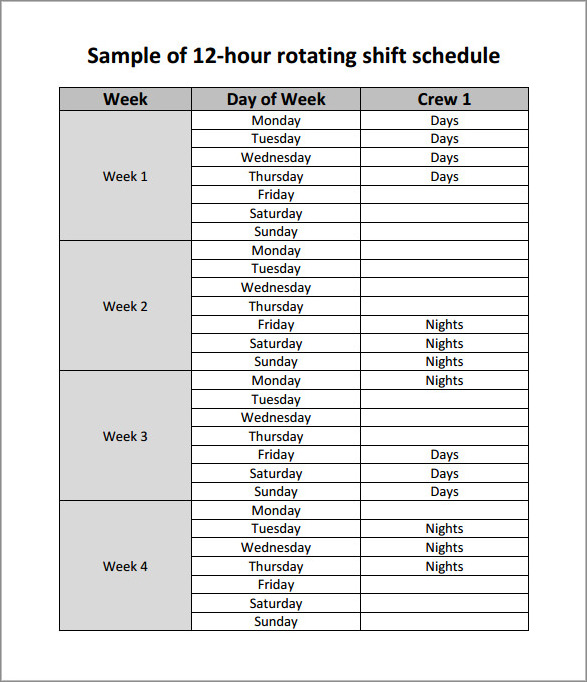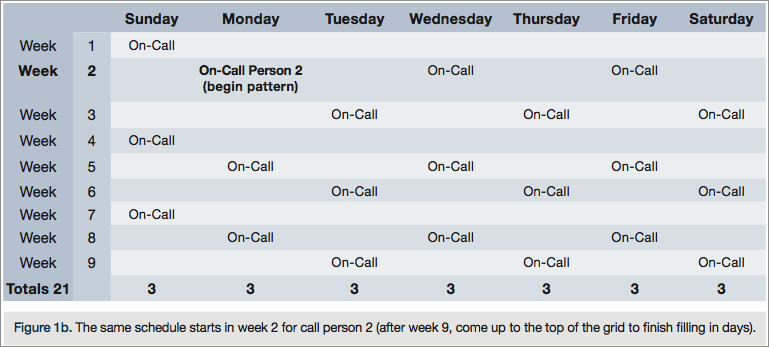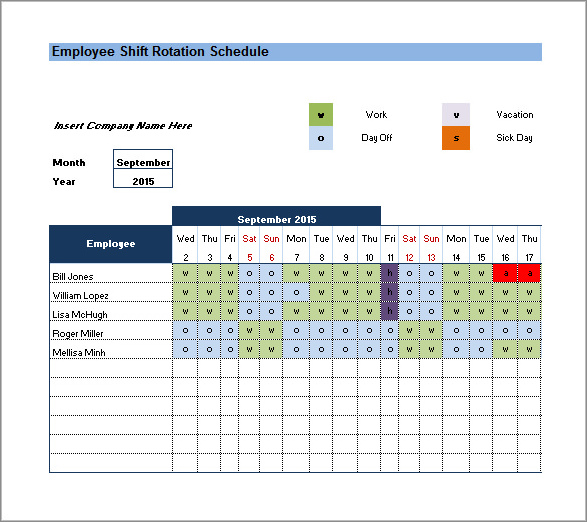As technology continues to advance and businesses operate on a global scale, the need for employees to be available around the clock has become more prevalent. This creates a challenge in maintaining a healthy work-life balance, as employees may feel constantly tied to their jobs and unable to fully disconnect.
However, implementing an on-call rotation schedule can help alleviate some of this stress and ensure that employees have dedicated time for rest and personal activities.
What is an On-Call Rotation Schedule?
An on-call rotation schedule is a system put in place by companies to ensure that employees are available to handle urgent issues outside of regular working hours. It typically involves a group of employees taking turns being on-call, meaning they are responsible for addressing any emergencies or critical situations that may arise during their designated period.
During their on-call period, employees are expected to be reachable and ready to respond to any issues that require their expertise or attention. This could include troubleshooting technical problems, providing support to customers, or making critical decisions in the event of a crisis.
How Does an On-Call Rotation Schedule Work?
The specifics of an on-call rotation schedule will vary depending on the company and industry. However, some common elements are typically included:
- Rotation Schedule: Employees are assigned specific time slots during which they are on-call. This can be daily, weekly, or monthly, depending on the needs of the business.
- Availability: On-call employees must be reachable during their designated period. This can be through phone calls, emails, or other communication channels.
- Response Time: Employees are expected to respond to any urgent issues within a certain timeframe. This ensures that problems are addressed promptly and efficiently.
- Handover: At the end of their on-call period, employees typically hand over any ongoing issues or information to the next person on the rotation. This ensures a smooth transition and continuity in handling any ongoing matters.
Benefits of an On-Call Rotation Schedule
Implementing an on-call rotation schedule can have several benefits for both employees and the company as a whole:
1. Work-Life Balance:
By sharing the on-call responsibilities among a group of employees, individuals can have dedicated time off to relax and recharge. This helps prevent burnout and promotes a healthier work-life balance.
2. Improved Productivity:
Knowing that they have designated time to focus on their personal lives, employees are likely to be more productive during their regular working hours. They can fully concentrate on their tasks without the worry of being constantly on-call.
3. Enhanced Employee Satisfaction:
An on-call rotation schedule shows employees that their well-being is valued by the company. This can boost morale and increase job satisfaction, leading to higher retention rates and improved employee engagement.
4. Increased Efficiency:
Having a structured on-call rotation schedule ensures that urgent issues are addressed promptly. This prevents delays in resolving critical problems, minimizing potential damage to the business.
5. Equal Distribution of Workload:
An on-call rotation schedule ensures that the responsibility of being available outside of regular working hours is shared among team members. This prevents any one individual from bearing the brunt of the on-call burden.
6. Clear Expectations:
With an on-call rotation schedule in place, employees know exactly when they are expected to be available and what is required of them during their on-call period. This clarity helps reduce confusion and ensures everyone is on the same page.
7. Professional Development:
Being on-call provides employees with opportunities to enhance their skills and knowledge. They may encounter unique challenges and gain valuable experience in handling critical situations, which can contribute to their professional growth.




Best Practices for Implementing an On-Call Rotation Schedule
- Define Clear Guidelines: Establish clear guidelines for on-call responsibilities, including availability, response time, and escalation procedures.
- Communicate the Schedule: Ensure that all employees are aware of the on-call rotation schedule and any changes that may occur. This prevents any confusion or misunderstandings.
- Provide Adequate Support: Equip on-call employees with the necessary tools, resources, and support to effectively address any emergencies or critical situations.
- Offer Compensation or Incentives: Recognize and reward employees for their commitment to being on-call, whether through additional compensation, time off, or other incentives.
- Regularly Review and Adjust: Continuously evaluate the effectiveness of the on-call rotation schedule and make adjustments as needed to ensure it is meeting the needs of the business and employees.
- Ensure Workload Balance: Regularly assess the workload of on-call employees to ensure it is distributed fairly and does not become overwhelming for any individual.
- Encourage Feedback: Create an environment where employees feel comfortable providing feedback and suggestions for improving the on-call rotation schedule.
Conclusion
An on-call rotation schedule is a valuable tool for maintaining work-life balance and ensuring that employees have dedicated time for rest and personal activities. By implementing a structured on-call system, businesses can improve productivity, enhance employee satisfaction, and address critical issues promptly. With clear guidelines and regular review, an on-call rotation schedule can be successfully integrated into any organization, benefiting both employees and the company as a whole.
On-call Rotation Schedule Template – Download
